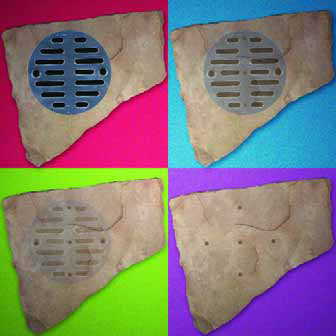ARTICLES
Advance Search
Aquatic Health
Aquatic Health, Fitness & Safety
Around the Internet
Aquatic Culture
Aquatic Technology
Artful Endeavors
Celebrity Corner
Life Aquatic
Must-See Watershapes
People with Cameras
Watershapes in the Headlines
Book & Media Reviews
Commentaries, Interviews & Profiles
Fountains
Join the Dialogue
Landscape, Plants, Hardscape & Decks
Lighter Side
Ripples
Test Your Knowledge
The Aquatic Quiz
Other Waterfeatures (from birdbaths to lakes)
Outdoor Living, Fire Features, Amenities & Lighting
Ponds, Streams & Waterfalls
Pools & Spas
Professional Watershaping
Structures (Editor's Notes)
Travelogues & History
WaterShapes TV
WaterShapes World Blog
Web Links
Around the Internet
Aquatic Culture
Aquatic Technology
Artful Endeavors
Celebrity Corner
Life Aquatic
Must-See Watershapes
People with Cameras
Watershapes in the Headlines
Whether you build fountains, streams or Olympic-size swimming pools, you need to install a pump of some kind to make these watershapes work. As fundamental and essential as pumps really are, however, it's amazing to think how casual many of us in the trade are when it comes to knowing about how they work and how their performance characteristics differ. We've all heard and used terms like "energy efficient," "high head" and "self-priming," but for the most part, the real meanings of those words get lost in the competitive marketing blizzard that surrounds these products. Without a clear understanding of how pumps are designed and how they do their job, these distinctions are no more than words on a label - and that's not the way it should be. As watershapes become ever more complex and hydraulically challenging, cutting through the hype to find out what truly makes pumps work becomes even more important: No matter how beautiful a design may be, without a properly selected and installed pump working at the heart of the system, the best work will fall short in
No one ever said that change was easy. In our case, in fact, it's been a struggle every step of the way. But even though we're still in the middle the process, I can tell already that it's been worth it - and that the best is yet to come. Lipinski Pools, an offshoot of Lipinski Landscaping in Mt. Laurel, N.J., has worked with pools as part of the company's overall landscaping business for several years now. We started by acting as general contractors and farming out a lot of the work. Using that approach, we
Montecito is home some of the grandest estates on the West Coast, but relatively few people know about it or where it is. A sleepy little town, it lies several miles east of Santa Barbara and some 80 miles or so northwest of Los Angeles. From the beautiful hilltop estates that dot the landscape, you can see Santa Barbara's wharf and downtown in the foreground, with sweeping vistas of the Pacific Ocean dominating the horizon. The big ranches of Montecito are dotted with hundreds of watershapes inspired by the Spanish-Colonial and Moorish architecture that surround them. Most were installed as part of the Spanish Revival movement that took hold among architects and landscape designers all over California through the first half of the 20th Century. The revivalists' octagonal and quatrefoil fountains and courtyards provide a visual link to the state's Spanish heritage. Fueled by the explosion of Hollywood's movie industry during this time, the combination of money, lots of open land and a popular architectural style resulted in creation of some of the most beautiful estates anywhere in the world - none more so than a property named Cima del Mundo, Spanish for
A little more than 100 years ago, in the first big growth spurt in the use of electricity, the harsh realities of the hazards involved with it quickly became apparent. Fires were common occurrences everywhere electricity was distributed, and serious (and often fatal) accidents made daily headlines wherever people came into contact with this wondrous phenomenon. Virtually all of the electric works being built in those early days were set up to provide lighting for a population tired of living in the gloom of candles, gas lamps and coal-oil lanterns. That meant that
You'd think that having lousy-looking deck drains was inescapable, given that about 99.9% of them look like a thing you'd find in your shower. Whether you're using PVC or brass grates, they disrupt the surface of any decking material and to my way of thinking are an unnecessary eyesore - nearly criminal when they interrupt the look and texture of a beautiful expanse of stone. It just doesn't make any sense to draw that much attention to the drains. That's why I decided to develop a deck-drain detail that doesn't break up the visual lines of the deck. It's extremely simple - and it's something you can
I feel like I'm working backward: First, I told you about a gargantuan water lily and its very specific requirements, then I offered a more general look at water lilies that will thrive in almost any pond. Now I'm going to give you some ideas and tips for designing with all types of water plants. It might have been more logical to approach things the other way around, but the important thing is that we're ready to complete the package and talk about ways of incorporating lilies and water plants of other sorts into beautiful, overall planting designs. As always, I will avoid getting too specific with recommendations. Instead, I'll stick to basic
In recent years, I've noticed a tremendous increase in the demand for shade structures - so much so that it would seem the era of slathering on suntan oil and basking in the sun in search of a savage tan might be gone forever. It's an exciting trend that really expands the creative possibilities for watershapers working across a broad range of styles and pricing levels. And no one could be happier about that than me: For one thing, I'm fair-skinned and burn easily; for another, adding
It's disappointing when we discover that something beautiful on the surface is devoid of substance at its core. Our world is full of far too many examples: The ill-tempered
Good design isn't the sole province of any one country: It's something that happens around the world in response to local flavors and textures and the needs and desires of people who live there. Most of these watershape markets are absolutely minuscule by comparison to the U.S. market - but in each location you'll find clients who are just as interested as their American counterparts in commissioning watershapes that reflect high aspirations, suitable affluence and






















